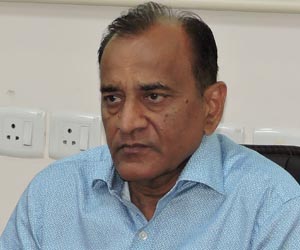Iconic slogans evolve with time, reflecting changing aspirations and needs of society in general and the political leadership in particular. Lal Bahadur Shastri’s famous ‘Jai Jawan, Jai Kisan’ cry had been tweaked to ‘Jai Jawan, Jai Kisan, Jai Vigyan’ by Atal Bihari Vajpayee. Now Prime Minister Narendra Modi has given it a further mandate, by adding ‘Jai Anusandhan’. The idea is to have a more intense focus on research and development (R&D) that can be cutting edge in certain cases which involve the rarefied areas of science and technology, and more rooted to improving the lot of the masses in other instances.
Prime Minister Modi gave the new call while addressing the 106th Indian Science Congress in Jalandhar recently. He said the power of science was transforming the country’s present and helping to secure its future. He also listed a few examples of such changes — from the production of aviation-grade biofuel to inexpensive devices that diagnose cervical cancer. These are commendable achievements, indeed. However, the road to a robust R&D environment is long and obstacle-ridden in this country, and despite efforts various governments have made since Independence, the ecosystem has still not evolved to a level that comes anywhere near world standards, let alone match them. It is, therefore, heartening that the Prime Minister has picked on the issue as the key to India’s future.
The last Economic Survey of India (mofapp.nic.in:8080/economicsurvey/pdf/119-130Chapter08ENGLISHVOLUME 01 2017-18.PDF) had flagged the matter in raw terms. It pointed out that the country’s spending on R&D in terms of percentage of the GDP had stagnated to less than one per cent in the past two decades. The survey strongly recommended doubling of national expenditure on R&D. It is to be remembered here that while the gross expenditure on R&D has tripled in the last decade (from Rs 24,000 crore plus in 2004-05 to Rs 85,300 crore plus in 2014-15), the ratio of that spend to the GDP has hovered at just between 0.6 per one and 0.7 per cent. Interestingly, while the GDP per capita continued to rise in 2015, the R&D spending declined. India spends the least among the BRICS nations
That the Economic Survey should have included a chapter on Science and Technology, which dealt with the R&D scenario, was a welcome indicator of the Government’s intent to revamp the research sector. The survey brought to light the dangers of India being left far behind others who have been consistently investing more in the area. In the near neighbourhood, China, Japan and South Korea have seen significant increases in their GDP expenditures. There were 301 Chinese companies in the Forbes 2017 list of global R&D spenders, and just 26 Indian firms. There is no Indian company in five of the top 10 R&D sectors, while China has one in every sector.
It can be said these are relatively rich nations which can afford a higher allocation for R&D (two per cent and more), while India has so many other priorities that funding for research inevitably gets squeezed out. But R&D is not an esoteric exercise — it has the potential to change the lives of the last man in the line for the better. Which is why the ‘Jai Anusandhan’ slogan the Prime Minister has given, assumes added relevance.
The figures put out by a study conducted some months ago by the National Science and Technology Management Information System (NSTMIS), which is part of the Department of Science and Technology in the Union Government, pointed to another aspect of the issue(www.nstmis-dst.org/Statistics-Glance-2017-2017-18.pdf). The Government’s share in R&D expenditure was higher than that of the private sector’s — the Union Government’s part in the gross expenditure was 45.1 per cent, that of the private sector was 38.1 per cent, the State governments contributed 7.4 per cent and public sector industries registered 5.5 per cent of the expenditure. When a large part of the R&D funding is driven by the government, which is in any case strapped for cash for various reasons and just cannot provide adequate money, research is bound to suffer — unless private enterprise steps in. That has not happened in India. NSTMIS compared the pattern of expenditure in 14 countries in Asia, the US and Europe, and found India topping the list in the share of government spending on R&D. Nearly 81 per cent of government sector expenditure came from just eight major scientific agencies in the areas of defence, agriculture, industrial research, biotechnology, space and atomic energy. The private funding was largely in the sectors of drugs and pharmaceuticals and transportation.
Interestingly, there has been a spurt in scientific publications in the country. The country’s share in global research publications increased from 2.2 per cent in 2000 to 3.7 per cent in 2013. What do we make of this development except that researchers are plodding on despite sufficient financial backup, especially from the private enterprise?
The NSTMIS survey also projects a rather worrying trend in the participation of Indian higher education institutions in R&D. It was a meek four per cent, while the number was seven per cent in China and as high as 40 per cent in Canada.
In the midst of these challenges, there have been bright spots too. Women participation in extramural R&D projects showed a significant enhancement — from 13 per cent in 2000-01 to 29 per cent in 2014-15. in absolute numbers, while only 232 women principal investigators had availed of the extramural R&D support in 2000-01, more than 1,300 women did it during 2014-15. In terms of personnel directly involved in R&D, as of April 1, 2015, nearly 14 per cent were women. According to the NSTMIS findings, more than 56 per cent of the doctorates awarded were in the discipline of science and technology in 2014. In that year, India had awarded the third-most number of doctorates in those subjects after China and the US. The number of researchers per million of the population has more than doubled from 2000 to 2015; in the latter year the number stood at 218. Even the R&D expenditure per researcher in terms of purchase party price on dollar basis was higher than that of Russia, the UK, Canada, Israel and Spain.
Some three years ago, Infosys co-founder NR Narayana Murthy lamented the failure of India in the area of world-class innovations. He pointed out that despite its renowned institutions and brilliant researchers, India had just 21,00 patent filings in 2013, as compared to 734,000 by China and 501,000 by the US. Of course, these figures may not necessarily give a holistic picture since they draw on the number of patent applications filed. There is still a low level of understanding in the country on intellectual property rights, and the incentive to file patent applications is not very high. Both the government and the corporate sector need to work in tandem to address the issue.
In sum, if the ‘Jai Anusandhan’ appeal has to translate into reality on the ground, systemic changes — and not just increased R&D funding — need to happen right from the school level to higher educational institutions, and from research laboratories to funding institutions.
(The writer is an author, senior political commentator and public affairs analyst.)
Image Source: https://trak.in/wp-content/uploads/2015/12/Research-and-Development-RD.jpg











Post new comment